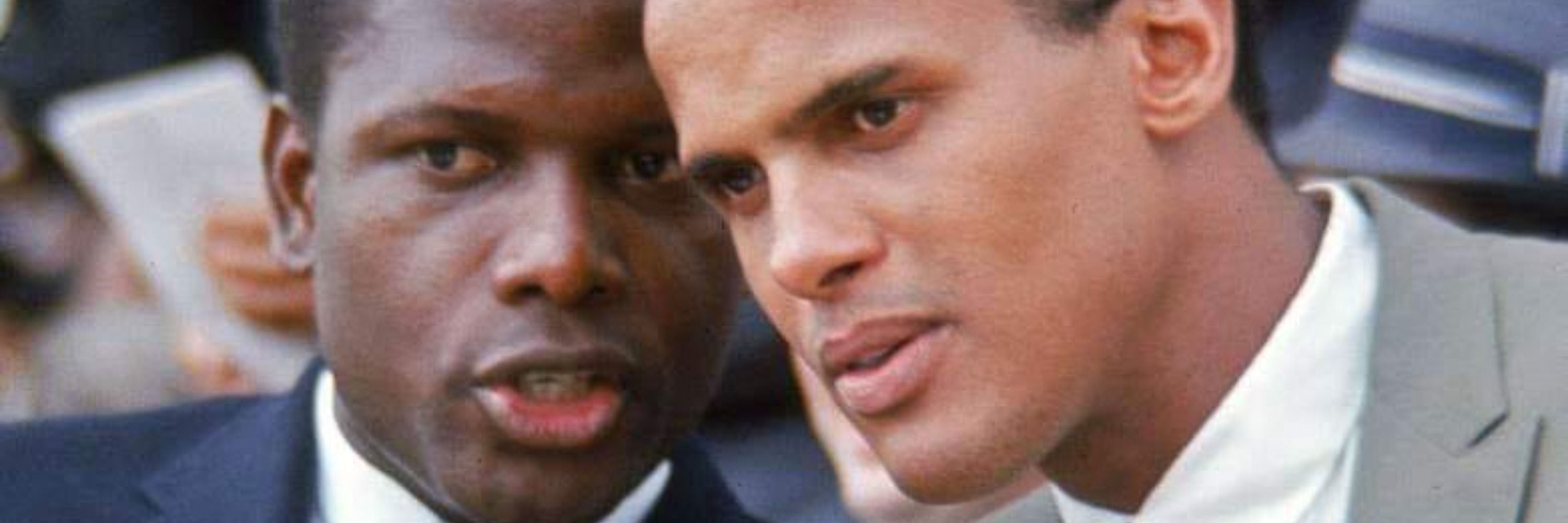
My replies might read as if they're said sharply but I always speak gently
Will never speak negatively about Black/Indigenous People anywhere.
+447341446247
All my messages are from a place of love and happiness, though they might read like they're attacking you bc I cannot read tones.
#neurodiverse
The “Farage is a racist” attack line isn’t going to hurt Reform UK’s base support.
That’s the assumption they’re already going with.
The “Farage is a racist” attack line isn’t going to hurt Reform UK’s base support.
That’s the assumption they’re already going with.
normalizes Churchill without mentioning that he was a racist; so I rated this episode and the series 1
Proof: bsky.app/profile/did:...
#tv
(1/2)
#police #whitepeople #whitedevil #british #english #history
normalizes Churchill without mentioning that he was a racist; so I rated this episode and the series 1
Proof: bsky.app/profile/did:...
#tv
www.imdb.com/title/tt0062...
#movie

www.imdb.com/title/tt0062...
#movie
www.imdb.com/title/tt0022...
(1/4)
#movie #polynesian #pacific #chinese #multiracial #POC

www.imdb.com/title/tt0022...
(1/4)
#movie #polynesian #pacific #chinese #multiracial #POC
www.belfasttelegraph.co.uk/news/irish-s...
#irish #movie

www.belfasttelegraph.co.uk/news/irish-s...
#irish #movie
www.imdb.com/title/tt3859...
#tv #britishtv

www.imdb.com/title/tt3859...
#tv #britishtv
bsky.app/profile/audu...
#blackmilitary #blacksoldiers #blacklivesstillmatter #blackwomen #blackpeople #blackamerican #police #whitepeople #whitedevil #blackhistory #blacksky #addtoblacksky
(12/14)
bsky.app/profile/audu...
#blackmilitary #blacksoldiers #blacklivesstillmatter #blackwomen #blackpeople #blackamerican #police #whitepeople #whitedevil #blackhistory #blacksky #addtoblacksky
(1/14)
#blacklivesstillmatter #blackmen #blackpeople #blackamerican #police #whitepeople #whitedevil #blackhistory #blackcivilrightsleaders #blackactivists #blackordainedministers #blackministers #blackbusinessmen #blacksky #addtoblacksky
(1/14)
#blacklivesstillmatter #blackmen #blackpeople #blackamerican #police #whitepeople #whitedevil #blackhistory #blackcivilrightsleaders #blackactivists #blackordainedministers #blackministers #blackbusinessmen #blacksky #addtoblacksky
All my messages are from a place of love and happiness, though they might read like they're attacking you bc I cannot read tones.
#neurodiverse
All my messages are from a place of love and happiness, though they might read like they're attacking you bc I cannot read tones.
#neurodiverse
Her mother was in University Hospital 700 miles from #Nagasaki when it was atomic bombed. The mountains and the hospital's concrete walls saved her.
www.imdb.com/title/tt1986...
#movie #greatmovie

Her mother was in University Hospital 700 miles from #Nagasaki when it was atomic bombed. The mountains and the hospital's concrete walls saved her.
www.imdb.com/title/tt1986...
#movie #greatmovie
Background
Willie Pearse was
(1/8)
#whitepeople #whiteheroes #irishhistory #irishheroes
Background
Willie Pearse was
(1/8)
#whitepeople #whiteheroes #irishhistory #irishheroes
www.imdb.com/title/tt0029...
www.imdb.com/title/tt0044...
#movie #POC #asian

www.imdb.com/title/tt0029...
www.imdb.com/title/tt0044...
#movie #POC #asian
www.hollywoodreporter.com/tv/tv-news/s...
#movie #jewish #whitewomen

www.hollywoodreporter.com/tv/tv-news/s...
#movie #jewish #whitewomen
bsky.app/profile/audu...
#blacklivesstillmatter #blackwomen #blackpeople #blackamerican #police #whitepeople #whitedevil #blacksky #addtoblacksky
#blackmen #blackpeople #blackamerican #policesky #whitepeople #whitedevil #blacksky #addtoblacksky
(1/33)
bsky.app/profile/audu...
#blacklivesstillmatter #blackwomen #blackpeople #blackamerican #police #whitepeople #whitedevil #blacksky #addtoblacksky
Source: Institute of Race Relations
#blacklivesstillmatter #blackmen #blackpeople #blackbritish #police #whitepeople #whitedevil #blacksky #addtoblacksky
Source: Institute of Race Relations
#blacklivesstillmatter #blackmen #blackpeople #blackbritish #police #whitepeople #whitedevil #blacksky #addtoblacksky
(1/4)
#blacklivesstillmatter #blackmen #blackamerican #police #whitepeople #blacksky #addtoblacksky
(1/4)
#blacklivesstillmatter #blackmen #blackamerican #police #whitepeople #blacksky #addtoblacksky
My mom looked at me, beaming, as she raised her arms over her head and exclaimed, “Look, Ash!! Seeee?!”
“What’s happening?” I asked. 😅
“Remember when I fell down the stairs and my collarbone didn’t heal right?
(1/2)
#meditation #healing #spirituality
My mom looked at me, beaming, as she raised her arms over her head and exclaimed, “Look, Ash!! Seeee?!”
“What’s happening?” I asked. 😅
“Remember when I fell down the stairs and my collarbone didn’t heal right?
(1/2)
#meditation #healing #spirituality
starts with a tale where all the animated characters are asian or white.
Talk about white adjacent.
www.imdb.com/title/tt1245...
#tv #asian

starts with a tale where all the animated characters are asian or white.
Talk about white adjacent.
www.imdb.com/title/tt1245...
#tv #asian
First time I heard an east asian call a non Chinese speaking ethnically Chinese a banana - yellow on the outside, white on the inside.
---
wild dolphins are scarred but still chirping
www.imdb.com/title/tt1089...
#movie #blackactors #TaylourPaige #PopSmoke #JorgeLendeborgJr

First time I heard an east asian call a non Chinese speaking ethnically Chinese a banana - yellow on the outside, white on the inside.
---
wild dolphins are scarred but still chirping
www.imdb.com/title/tt1089...
#movie #blackactors #TaylourPaige #PopSmoke #JorgeLendeborgJr
a dark skinned Indian beats a light skinned Indian woman
making this movie colorist whilst simultaneously highlighting an undoubtedly important issue
www.imdb.com/title/tt3638...
#tv #domesticviolence

a dark skinned Indian beats a light skinned Indian woman
making this movie colorist whilst simultaneously highlighting an undoubtedly important issue
www.imdb.com/title/tt3638...
#tv #domesticviolence
Angela's deafness raises concerns during her pregnancy regarding connecting with her daughter. Post-delivery, partner Héctor supports her as she learns to mother in a society lacking
(1/2)
#movie
Angela's deafness raises concerns during her pregnancy regarding connecting with her daughter. Post-delivery, partner Héctor supports her as she learns to mother in a society lacking
(1/2)
#movie
legitimizes pigs when over 75% of them are racist. Proof: bsky.app/profile/audu...
So I rated it 1
#movie #massshootings #education
bsky.app/profile/audu...
#blacklivesmatter #blacklivesstillmatter #blackmen #blackpeople #blackamerican #police #whitepeople #blacksky #addtoblacksky
www.psychologytoday.com/us/blog/mind...
(3/11)
legitimizes pigs when over 75% of them are racist. Proof: bsky.app/profile/audu...
So I rated it 1
#movie #massshootings #education
The radio expert replied that:
1. the company knows that the caller cannot pay
(1/2)
The radio expert replied that:
1. the company knows that the caller cannot pay
(1/2)
The first criminal shown is of color. US movies/tv will often show a mixture of Black and characters of color to give the impression that they're being unbiased when
(1/4)
#movie
The first criminal shown is of color. US movies/tv will often show a mixture of Black and characters of color to give the impression that they're being unbiased when
(1/4)
#movie

